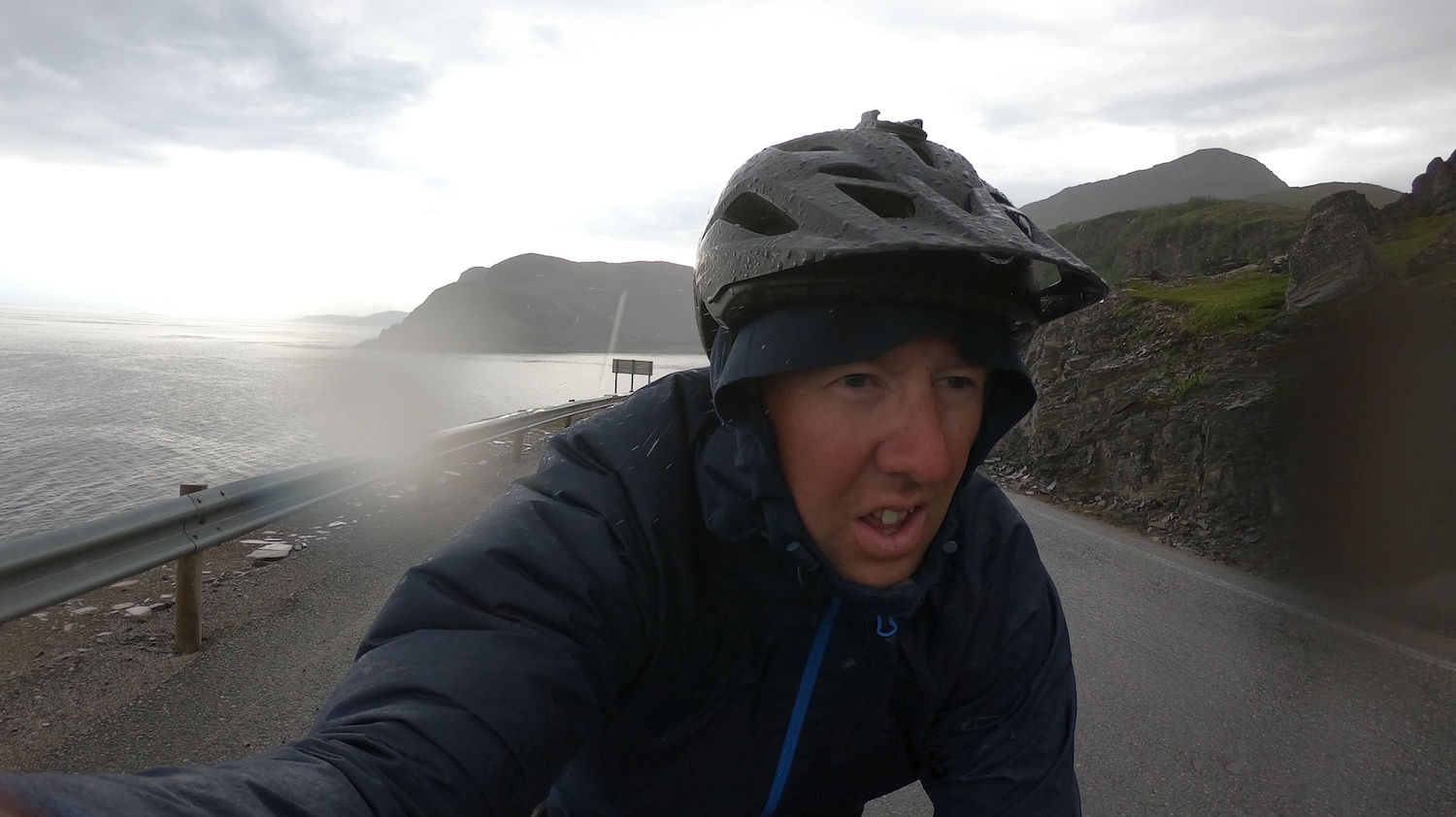![IMG_2179[1]](https://cog.konaworld.com/wp-content/uploads/2022/07/IMG_21791.jpg)
By Ambassador Mikael Hedberg
Third time’s a charm they say. I had planned on going on this bike tour for the last two years, but the pandemic caused me to postpone it the previous two summers. And I say summers, since you have quite a small time frame if you want to ride up to the North Cape on your bike. The road leading there is only open for a couple of months during summer. And with the weather changing from warm and sunny to freezing cold rain in a matter of minutes you really have to be prepared for all kinds of weather. It can basically snow during any month of the year.

I decided to start my journey in the Lofoten Islands, about 1100 km away from the North Cape, in a much more bicycle friendly environment. The Lofoten Islands are famous for their steep mountains sticking out of the sea, deep fjords and sandy white beaches. You almost feel like you’re in the Caribbean sometimes. That is as long as you don’t go down to the water and dip your feet in. You’re quickly going to remember that you are still in the Arctic since the water is freezing cold.
I had given myself 12 days to make it up to the North Cape, but I would say that two weeks is probably a better time span to aim for. That way you could take a day off if the weather turns for the worse. And it does that up here. A lot.
![IMG_2142[1]](https://cog.konaworld.com/wp-content/uploads/2022/07/IMG_21421.jpg)
I camped every night of this trip in my 2-man tent. Norway is known as probably the most expensive country in the world but if you cut away the cost for lodging you can actually have a very inexpensive trip. Wild camping is allowed and even encouraged in Norway, although it can be a bit tricky in the crowded Lofoten Islands. But if you just go off the main road for a while you’ll find an abundance of great wild camping sites. I tried to wild camp for three nights straight, then spend one night at a proper campground. That way I was able to take a shower, charge all my electronics and batteries and just hang out with other cyclists and share experiences from the road.
When you look at photos from the Lofoten Islands you might think that you’re in for a hilly ride. But the fact is that it’s the total opposite of that. The road follows the coastline for most of the time and you rarely have to make big climbs. There are tunnels here and there as well, but you can avoid most of them since they often have a small road for cyclists on the outside of the tunnels.
Lofoten has become very popular over the last couple of years due to a massive surge of posts on social media, and the place is literally jammed packed with camper vans and RVs. But somehow you never feel in danger as a cyclist on the roads. The speed limit is set low, due to the winding roads and since people are on holiday, they drive in a relaxed manner. After two days on Lofoten I took the ferry to the nearby Vesterålen Islands and it was such a relief getting away from the traffic for a while. Vesterålen Islands and the nearby Senja island, are almost as picturesque as Lofoten, but without all the tourists.
![IMG_1416[1]](https://cog.konaworld.com/wp-content/uploads/2022/07/IMG_14161.jpg)
Even though I stopped what seemed like every five minutes for the first couple of days to take photos, I was still able to cover around 100 kilometers per day. And after about five days I made it to what is considered the northernmost city in the world, Tromsø. Tromsø marks the halfway point between Lofoten and the North Cape, and while the cycling is easy and relaxed before Tromsø it turns into a real challenge after.
After leaving Tromsø you could definitely feel a shift in the number of cyclists along the road. Gone were most of the more lightweight bikepacking crowd and left were only the hard core ones with what seemed a like a lot of gear strapped to their bikes. What united them all was that they had set their minds to climb the mountain passes and conquer the mighty winds the barren Norwegian landscape that lay ahead had to offer. Those that decided to continue to beat the final boss of this bike tour formed a tight bond, and will remember fighting those long steep climbs, as well as the dread 7 km long Nordkapptunnelen, for a long time to come.

The landscape really changes during the last couple of days. Since we’re so far up north there’s hardly any vegetation that manages to survive the winters up here. As soon as you leave sea level and climb up a hill there is literally nothing growing up there. Just a barren tundra landscape. This makes everything much harder on you as a cyclist since there is no shelter from the never-ceasing head winds. iIt also makes it pretty difficult to find a sheltered spot to pitch your tent at the end of the day. On the second to last day I had to ride through an Arctic thunderstorm for a couple of hours since I couldn’t find any shelter from the pouring rain anywhere. It was pretty tough mentally, but I finally managed to find a small sheltered bay at the end of my very long day, where I was able to pitch my tent in the pouring rain.
The feeling of finally getting to the North Cape the next day was certainly a mixed bag of emotions. I felt a great sense of accomplishment after those last couple of days battling the rain, winds and climbs. And I was so proud over the fact that only my legs and my Kona had taken all the way to the end of the world. But at the same time I was ready for more. I guess the next challenge will just have to wait until next time.
![IMG_1142[1]](https://cog.konaworld.com/wp-content/uploads/2022/07/IMG_11421.jpg)
Getting to the North Cape monument itself was kind of anti-climactic. You’re literally fighting your way up there with your bike battling the crowds of German bus tourists. Everyone just wants to take the same photo. Like there is some sort of challenge in sitting on a bus for a couple of hours to get there. While you, who have been cycling for the last couple of weeks, just want to say: “Hey, I actually put in a lot of effort to get here. Can I please just take my photo?”. But you stay silent and kindly wait for your turn.
I would say the reward for cycling all the way up there instead is all the great things you get to see along the road. And all the great people you get to talk to. Since there aren’t a lot of roads to choose from, everyone basically follows the same route. So you’re going to end up seeing the same people on bikes for many days in a road, passing each other along the road. And after a while a sort of community starts to take shape. I’ve been on a lot of bike tours all over Europe, but I’ve never experienced this sort of comradery. I guess the only thing I can compare it to is hikers that go on a thru hike, like the PCT or the AT.
To sum up everything I’ve been writing about in the article, I’d like to go back to one of my favorite quotes: It’s not about the destination, it’s all about the journey.

